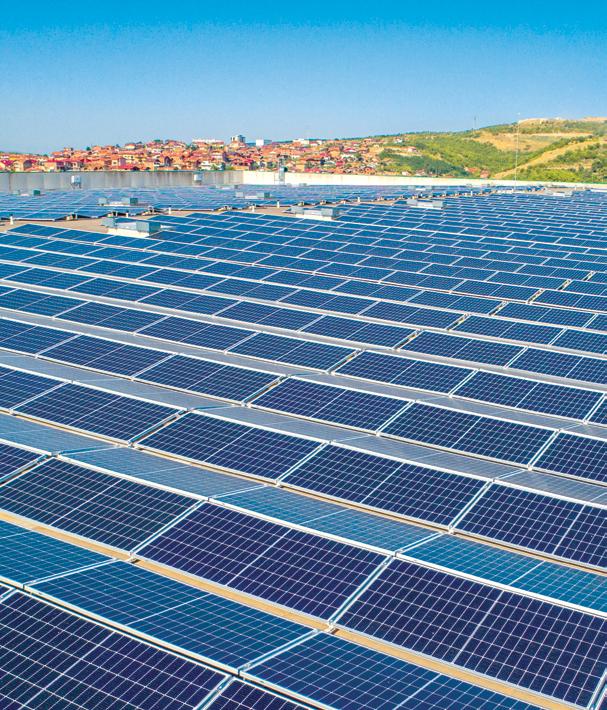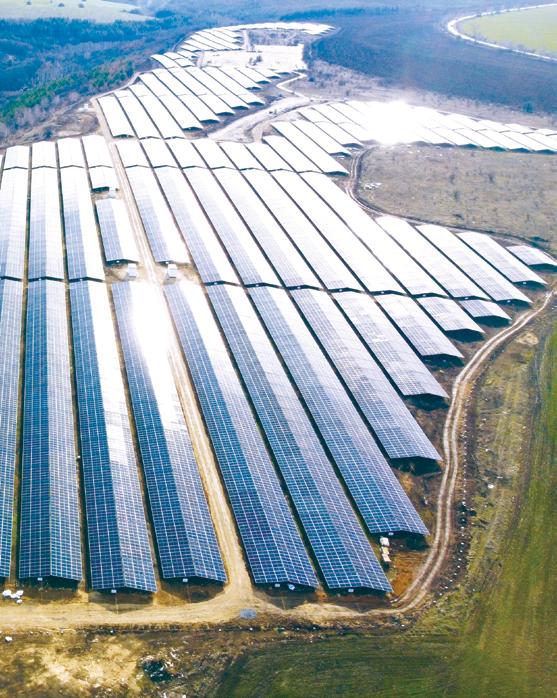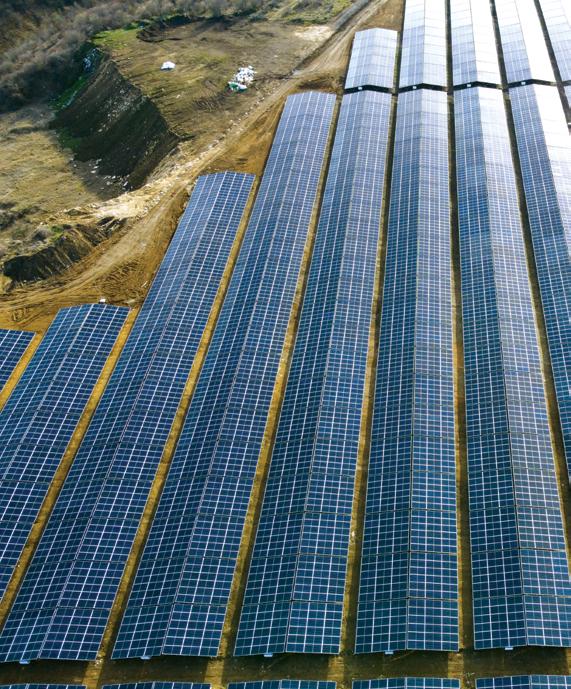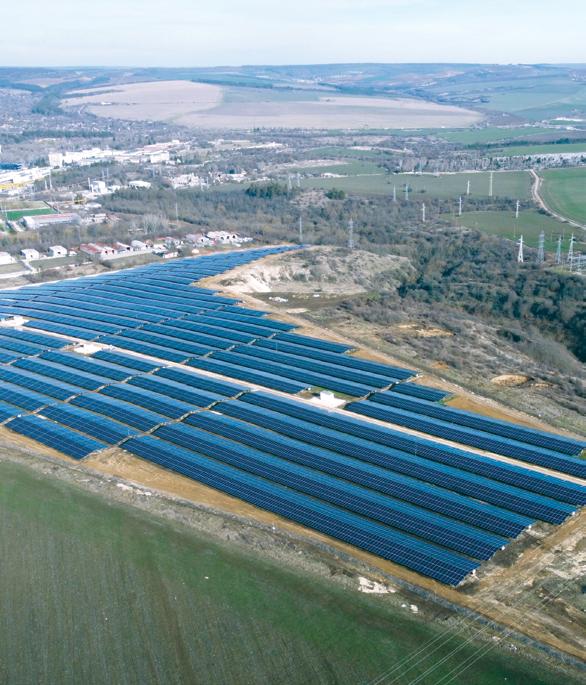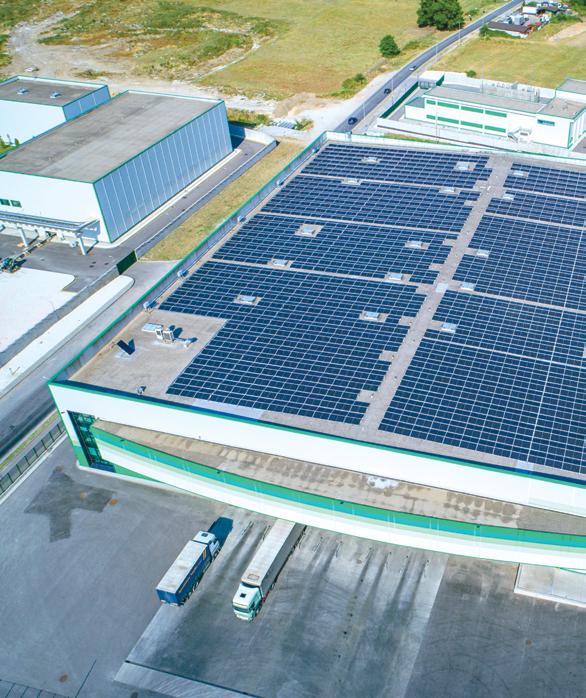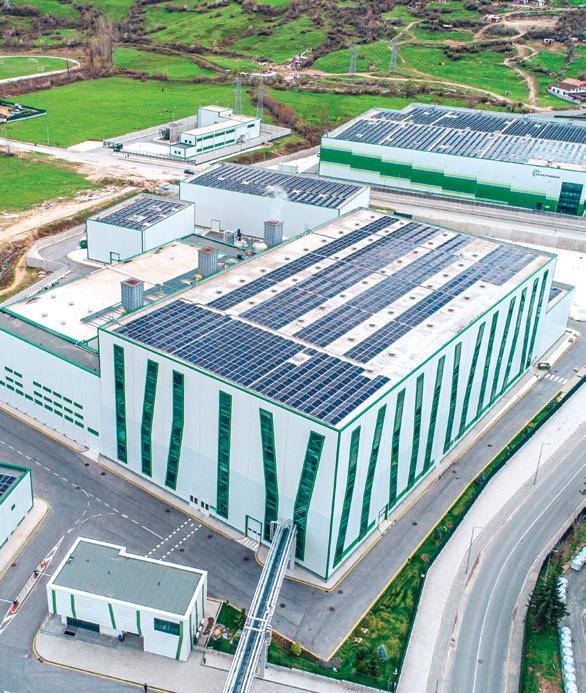
3 minute read
The Pathway to Carbon-Neutral Production
Huvepharma®’s pathway to carbon-neutral production comprises significant investments of €269 million in renewable energy installations.
The renewable energy installations comprise of solar panels, a geothermal plant and a green hydrogen production facility. These installations will produce electricity for the manufacturing process. The combined installations have an installed capacity of 317MW. Based on this installed peak capacity, Huvepharma® will reach it’s goal of carbon neutrality.
Advertisement
There is a 45 – 47MW electricity requirement for the manufacturing process across our three factories in Bulgaria and these operate 24 hours a day, 7 days a week and 365 days per year. During the summer months, excess electricity produced by the renewable installations will be supplied into the national grid.
Solar panel installations
Investments in renewable energy installations
million
€269 million
Solar power is the conversion of energy from sunlight into electricity. In the final six months of 2022, an average of 7% of the electricity requirement was already produced through solar panels. As more panels are installed, this percentage will increase.
Upon completion, the installed 300MW will require ~300 hectares and is sufficient for 300’000 households. The total investment in solar panels is €200 million.
Green hydrogen production
Green hydrogen production takes place through water electrolysis using solar generated electricity. 10MW of solar energy will be used in the facility to produce green hydrogen which will be utilised in the steam boilers to reduce natural or compressed gas usage. In addition to lowering our reliance on natural gas, green hydrogen is emission-free at the point of use and will reduce carbon emissions for steam generation substantially. The investment comprises €19 million.
Geothermal plant
Huvepharma®’s investment of €50 million (2024 – 2030) in geothermal energy will produce 17MW of energy.
Renewable energy inputs
Solar panel installations and the geothermal installed peak capacity plant will produce electricity for the manufacturing process. The installed capacity will be 317MW. Green hydrogen will be utilised in steam boilers.
Huvepharma®’s energy requirement is 45 – 47MW. Based on the installed capacity of renewable energy, Huvepharma® will be certified as carbon neutral.

Energy Efficiencies
Investments in renewable energy installations have been coupled with improved energy efficiencies to accelerate Huvepharma®’s pathway to carbonneutral production. Central to this is the circular economy approach. A circular economy involves the reuse and regeneration of materials as a means of continuing production in a sustainable way.
Facilities which contribute to the circular economy approach:
Incineration plants which utilise waste and by-products for the production of steam
Water cooling plants which constantly recycle water used for cooling
Incinerator plant
Steam is a critical utility and essential for the fermentation inputs in the manufacturing process, and as part of the circular economy approach, the incinerator plants minimise the use of resource inputs and the creation of waste, pollution and undesirable emissions. 30% of our steam requirements are produced through heat recovery in the incinerator plants.

30% of Huvepharma®’s steam requirements are produced in its circular economy through heat recovery
Waste from:
▶ paper
▶ biomass
▶ wastewater sludge
▶ local community waste
Incinerator
24-hour monitoring of exhaust air
Water cooling facility
Water for cooling is continuously recycled in the water cooling facility and reused in production.
Environmental Protection
Over the past 15 years, Huvepharma® has invested in supporting installations which minimise the impact on the environment. The benefits of these investments are both societal and environmental.
Environmental Projects
Manufacturing process
Silos for raw material storage to reduce packaging and waste

Air exhaust treatment facilities
Wastewater treatment facilities
Recycling facilities
Water cooling tower
Huvepharma® is steadily and consistently reducing its carbon footprint by implementing innovative technologies in equipment and supporting installations. The new fermentation plant, commissioned in 2019 and one of the largest in Europe, is 15% more efficient than a traditional plant. Ongoing equipment renovations and upgrades and waste energy utilisation contribute to improving energy efficiencies.

Societal benefits
Noise and odour reduction
Local waste collection for incineration reducing landfill
Wastewater treatment plant
Exhaust air treatment
Green from Strain to Shelf
Huvepharma® is committed to carbon-neutral production by 2030. With the significant investments in renewable energy installations and in improving energy efficiencies, we will achieve our sustainability targets. Reducing the carbon footprint of the four critical utilities of the fermentation process (steam, water, compressed air and electricity) is central to these ambitions.

The work is on-going. Improving technologies in, for example, battery storage will allow Huvepharma® to harness renewable energy during night time production. The production teams analyse each step of the manufacturing process to reduce, reuse and recycle resources in line with the circular economy approach.
Huvepharma®’s products contribute to the reduction of livestock emissions at farm level. Combined with the reduction of greenhouse gases in the manufacturing process, Huvepharma® is leading the way in sustainably shaping livestock solutions.
